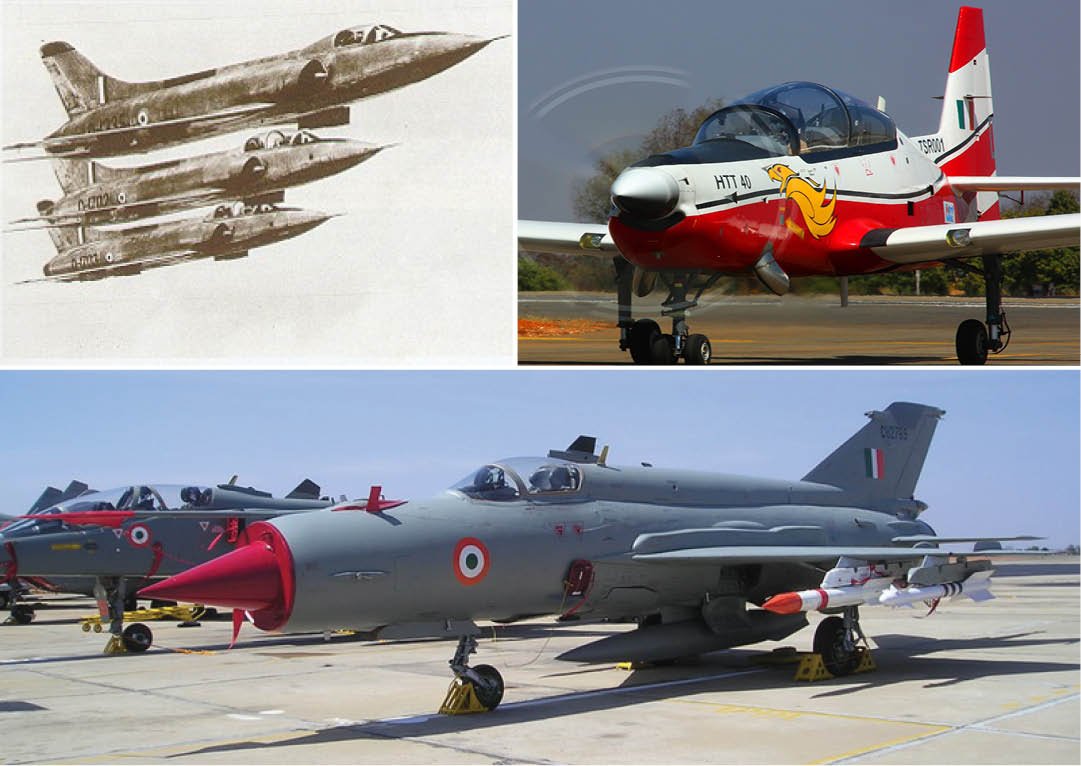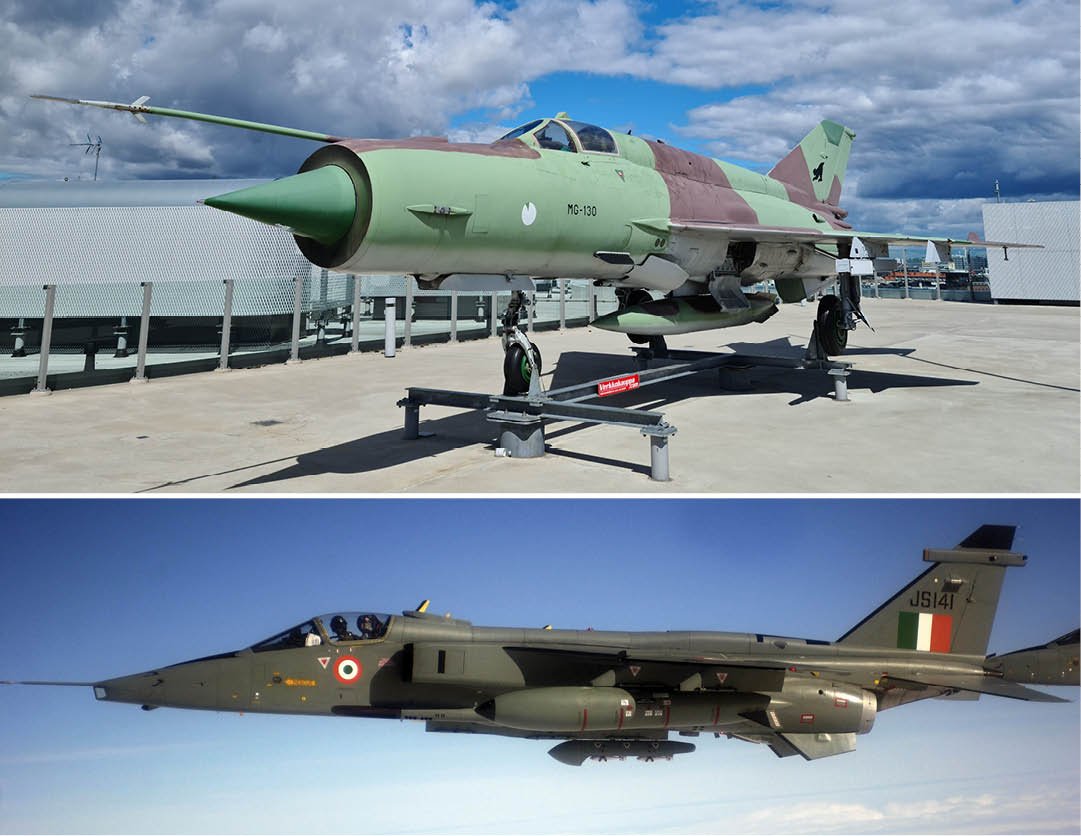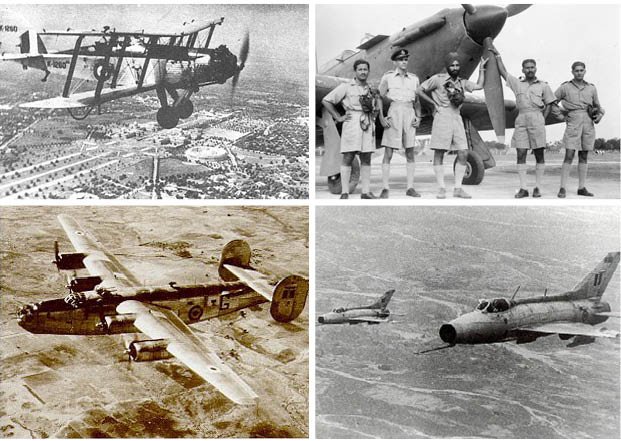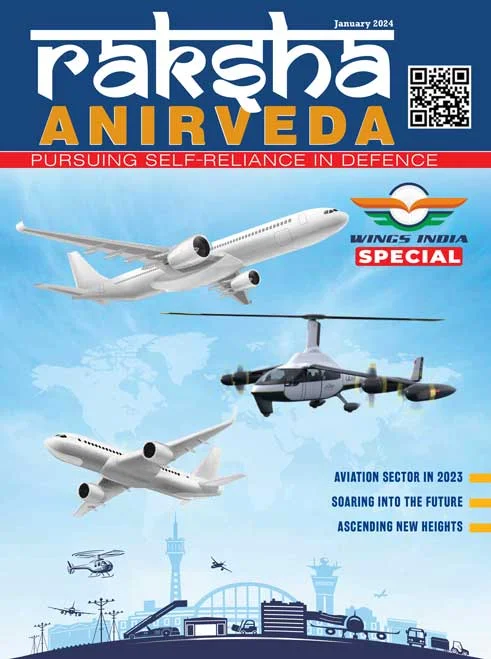The Indian Air Force (IAF) is committed to safeguarding the nation’s skies and contributing to its defence and strategic objectives. Established on 8 October, 1932, the IAF has evolved from a modest auxiliary force to one of the world’s most formidable air forces, playing a pivotal role in India’s defence strategy across numerous conflicts and peacekeeping operations. The historical trajectory of the IAF offers a compelling narrative of growth, resilience, and adaptation in the face of changing geopolitical landscapes and military advancements.
Founding and Early Years (1932 – 1947)
The IAF was founded during the British colonial period as a part of the Royal Air Force (RAF) with the primary objective of serving the interests of the British Empire. On its inception, the force was modest, consisting of just six officers, 19 airmen, and four Westland Wapiti biplanes. Initially called “Royal Indian Air Force,” it operated in a supporting role, undertaking reconnaissance, transportation, and communication duties.
During World War II, the IAF expanded significantly and gained invaluable combat experience. The force participated in key operations in the Middle East, North Africa, and Southeast Asia, including the Burma Campaign. Indian pilots and personnel distinguished themselves, showcasing their skill and bravery in the face of the enemy. This experience laid the foundation for the force’s professionalism and operational capability in the years to come.
The IAF’s contribution to the Allied war effort earned it respect, and in 1945, it was officially designated as the “Royal Indian Air Force” by King George VI in recognition of its service. However, the transition from a colonial auxiliary force to an independent air force began with India’s independence in 1947.
From its humble beginnings as a colonial auxiliary force, the Indian Air Force has emerged as a vital pillar of India’s defence and a key player in maintaining regional stability. Over its nearly century-long existence, the IAF has continuously adapted to the changing dynamics of warfare and geopolitics, embracing modern technology and evolving strategies to meet new challenges
Post-Independence and the Partition Era (1947 – 1950)
India’s independence in 1947 marked a new era for the IAF, but it was also a time of great uncertainty. The partition of India and Pakistan resulted in the division of assets, including the military. The IAF was split, with Pakistan receiving a portion of the aircraft, personnel, and infrastructure. Despite this challenge, the IAF remained steadfast in its role as the aerial guardian of independent India.
The first significant test for the IAF came during the 1947-48 Indo-Pakistan War over Jammu and Kashmir. The IAF played a crucial role in providing air support to the Indian Army, carrying out supply drops, troop transportation, and reconnaissance missions. Its performance during the conflict helped stabilise the situation in the region and demonstrated the importance of air power in modern warfare.
In 1950, after India became a republic, the prefix “Royal” was dropped, and the force was renamed as the Indian Air Force. This marked the beginning of the IAF’s journey as a fully sovereign air force, evolving its strategic doctrines and expanding its capabilities.
The first significant test for the IAF came during the 1947-48 Indo-Pakistan War over Jammu and Kashmir. The IAF played a crucial role in providing air support to the Indian Army, carrying out supply drops, troop transportation, and reconnaissance missions
Cold War Era and Modernisation (1950 – 1960s)
The 1950s and 1960s saw rapid modernisation of the Indian Air Force. As the geopolitical situation in Asia became more complex with the onset of the Cold War, India sought to strengthen its defence capabilities. The IAF began to replace its ageing fleet of British-made aircraft with more advanced planes from various countries, including the Soviet Union.
During the 1962 Sino-Indian War, the IAF was primarily restricted to non-combat roles such as transportation and supply missions. However, the conflict exposed the need for a stronger air force, prompting the Indian government to accelerate its modernisation efforts. The IAF’s fleet expanded with the acquisition of Soviet MiG-21 jets, which became the backbone of India’s fighter squadrons for decades.

In 1965, the IAF was called upon again during the Indo-Pakistan War. This time, the IAF was actively engaged in combat, and despite facing a well-equipped Pakistan Air Force, it succeeded in maintaining air superiority in key sectors. The war underscored the need for further modernisation, particularly in terms of aircraft technology and pilot training.
The 1971 Indo-Pakistan War and the Creation of Bangladesh
The 1971 Indo-Pakistan War remains one of the most defining moments in the history of the Indian Air Force. As tensions between India and Pakistan escalated over the issue of East Pakistan (modern-day Bangladesh), the IAF played a crucial role in the conflict. It launched pre-emptive strikes against Pakistani airfields and supported the Indian Army both in the eastern and western sectors.
The IAF’s operations in the eastern theatre were particularly significant in the swift victory of Indian forces, and creation of Bangladesh. The conflict demonstrated the IAF’s ability to conduct sustained offensive operations and highlighted the importance of air power in modern warfare.
During the 1962 Sino-Indian War, the IAF was primarily restricted to non-combat roles such as transportation and supply missions. However, the conflict exposed the need for a stronger air force, prompting the Indian government to accelerate its modernisation efforts
Post-1971, Modernisation and Strategic Shifts
In the aftermath of the 1971 war, the Indian Air Force embarked on a new phase of modernisation and strategic reorientation. The acquisition of advanced fighter aircraft such as the SEPECAT Jaguar and the Mirage 2000 significantly enhanced the IAF’s strike capabilities. The Mirage 2000, in particular, became a symbol of the IAF’s precision strike power, and it played a key role in later conflicts.
During this period, the IAF also began focusing on expanding its air defence network, acquiring sophisticated radar systems, surface-to-air missiles, and upgrading its airbases. The IAF’s involvement in peacekeeping missions under the United Nations further expanded its international profile.
Kargil War and Beyond: The IAF in the 21st Century
The Kargil War of 1999 was a major turning point for the Indian Air Force in the post-Cold War era. In this conflict, the IAF carried out precision airstrikes against Pakistani positions in the rugged mountainous terrain of Kargil. The successful operation, code-named “Operation Safed Sagar,” demonstrated the IAF’s ability to adapt to new challenges, including high-altitude warfare.

In the years following Kargil, the IAF continued to modernise its fleet with the induction of advanced multirole fighters such as the Sukhoi Su-30MKI. It also expanded its strategic reach by acquiring aerial refuelling tankers and heavy-lift transport aircraft, allowing the IAF to project power across vast distances.
The IAF has also been at the forefront of disaster relief and humanitarian assistance missions. It has provided critical aid in the aftermath of natural disasters, both within India and abroad, showcasing its role as a force for good in the region.
The 1971 Indo-Pakistan War remains one of the most defining moments in the history of the Indian Air Force. As tensions between India and Pakistan escalated over the issue of East Pakistan (modern-day Bangladesh), the IAF played a crucial role in the conflict
Challenges and the Future
As the IAF looks to the future, it faces several challenges, including the need to replace its ageing fleet of aircraft, enhance its cyber capabilities, and integrate cutting-edge technologies such as drones, artificial intelligence, and space-based assets into its operations. The indigenous Tejas Light Combat Aircraft and the acquisition of Rafale fighter jets from France are steps towards achieving these objectives.
The IAF’s strategic focus has also expanded to address emerging threats in the Indo-Pacific region, with increased emphasis on network-centric warfare, joint operations with the Indian Navy and Army, and enhancing its space-based reconnaissance capabilities.
From its humble beginnings as a colonial auxiliary force, the Indian Air Force has emerged as a vital pillar of India’s defence and a key player in maintaining regional stability. It has continuously adapted to the changing dynamics of warfare and geopolitics, embracing modern technology and evolving strategies to meet new challenges
From its humble beginnings as a colonial auxiliary force, the Indian Air Force has emerged as a vital pillar of India’s defence and a key player in maintaining regional stability. Over its nearly century-long existence, the IAF has continuously adapted to the changing dynamics of warfare and geopolitics, embracing modern technology and evolving strategies to meet new challenges. As it moves forward, the IAF will remain an indispensable component of India’s military might, ready to defend the nation’s sovereignty and contribute to global peace efforts.
–The writer is a seasoned media professional with over three decades of experience in print, electronic, and web media. He is presently Editor of Taazakhabar News. The views expressed are of the writer and do not necessarily reflect the views of Raksha Anirveda










